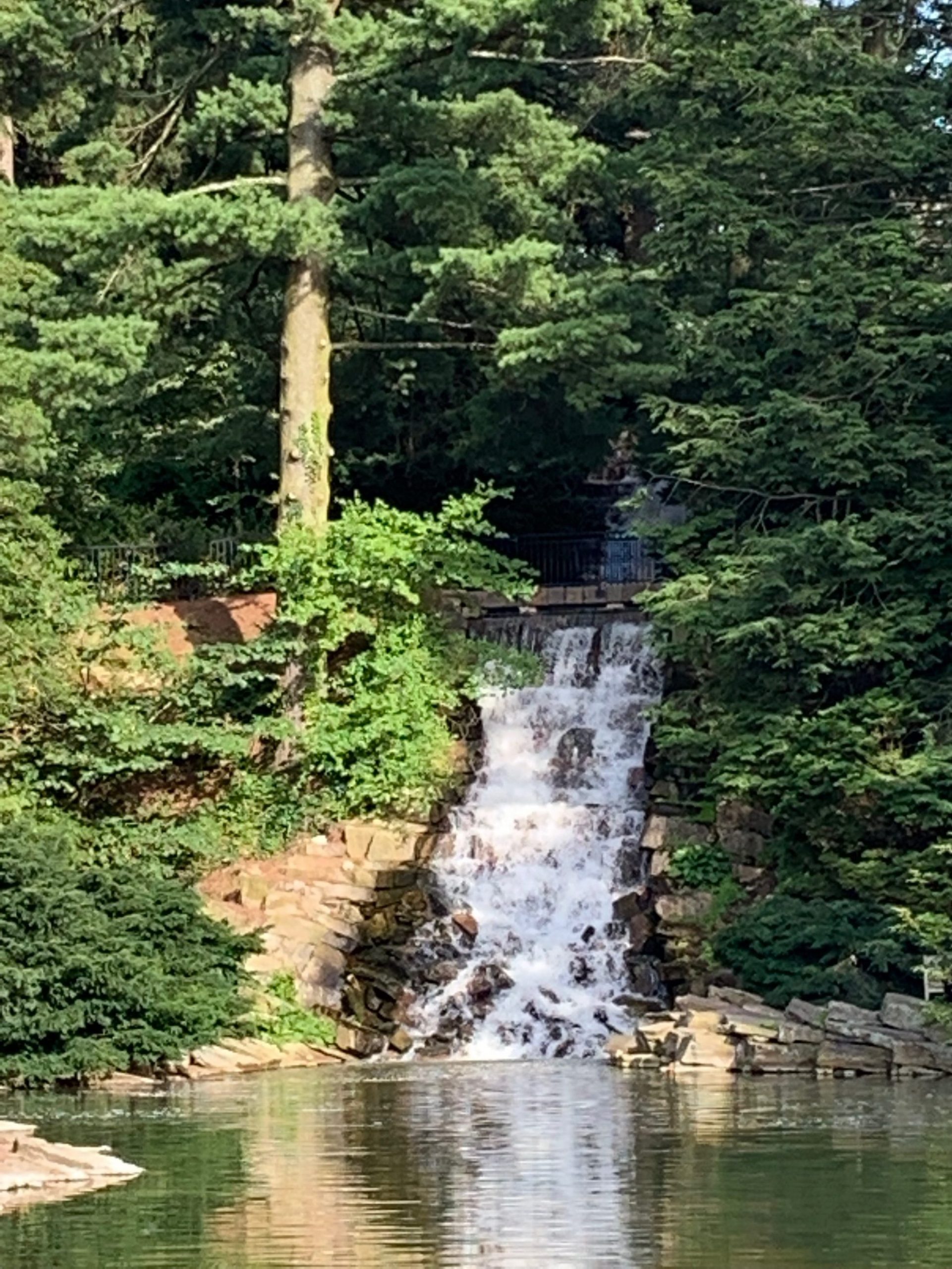Post contributed by Dr. Wendy Vidor, Lecturer, Department of Horticulture
My fondest childhood memory is connected to a tree, a common silver maple (Acer saccharinum). With its shimmery silver white leaves, smooth, and somewhat flaky bark, and helicopter double samaras. It was my connection to the earth and the world around me. I guess you could say that this tree had influenced my path in life to become a horticulturist.
The tree was my sanctuary and solace. I would climb its many limbed branches to reach the top of the world. I would sit in that tree for it seemed hours just listening to nature and observing the world around me.
Trees are beautiful and majestic, provide aesthetic beauty with their endless variety of forms, textures and shapes and provide vibrant colors as they change through the seasons. They have history and they are living memorials. They provide emotional attachments and create memories and bonds of our childhood.

A view at Longwood Gardens. Photo credit: Wendy Vidor, 2019.
Trees also provide ecological and environmental value to our landscapes. Here are some of the benefits trees provide:
- Oxygen
- Improve air quality by filtering out pollutants.
- Conserve water
- Help to prevent soil erosion
- Carbon sequestration
Trees in urban landscapes provide:
- Aesthetics
- Energy conservation “Trees properly placed around buildings can reduce air conditioning needs by 30%” according to the USDA Forest Service.
- Increased economic value to our homes and businesses.
- Moderation of temperature by reducing the heat island effect in cities by deflecting the sunlight off pavement and commercial buildings.
- They capture pollutants and dust, protect us from wind and rain, and lower the temperature.
Why does it seem that we have lost our connection to the trees? In today’s society we have noticed that people are developing “plant blindness.” We have become disconnected from nature and no longer look at the intricacies of plants and trees as part of the landscape. We walk through our campus every day without noticing the beauty surrounding us.
Auburn University’s campus is filled with trees that are magnificent specimens of nature. There is the famous “Toomers Oak” (Quercus virginiana) that we roll each year to celebrate victories, and also very rare specimens like the Metasequoia glyptostroboides (Dawn Redwood), which was once thought to be extinct. This tree has been on the earth for over 50 million years. Seeds of this tree were bought back from China where it was discovered growing in the wild in the town of Modaoqi, China in 1941 by Chinese forester, T. Kan. Seed collected from the original site were made available to several arboretums and campuses around the country including Auburn’s Donald E. Davis arboretum, the Missouri Botanical Garden and other gardens and horticulture departments across the country. We have the magnificent Donald E. Davis Arboretum with over 39 Oak specimens and other tree and shrub collections on our campus. Another tree of note is the “Founders Oak” Quercus stellata which is also labeled in the Arboretum. Additionally, we have thousands of other trees and shrubs planted around campus that have been collected and planted for all to enjoy.
The history and uniqueness of Auburn’s campus is a tribute to the many trees planted and protected by our Tree Preservation Committee. These trees add another layer to the history and beauty of Auburn University. Take a moment to pause, reflect, and reconnect under these magnificent wonders of nature.




